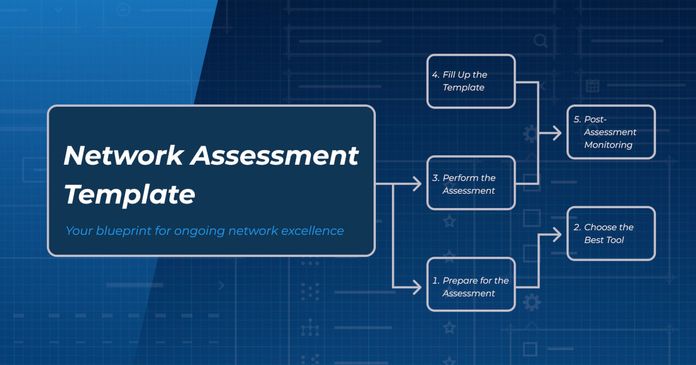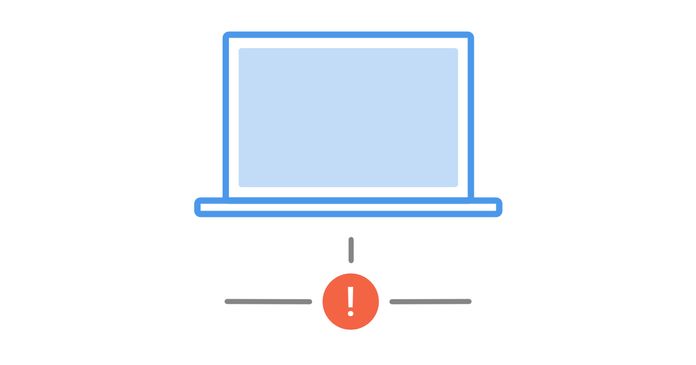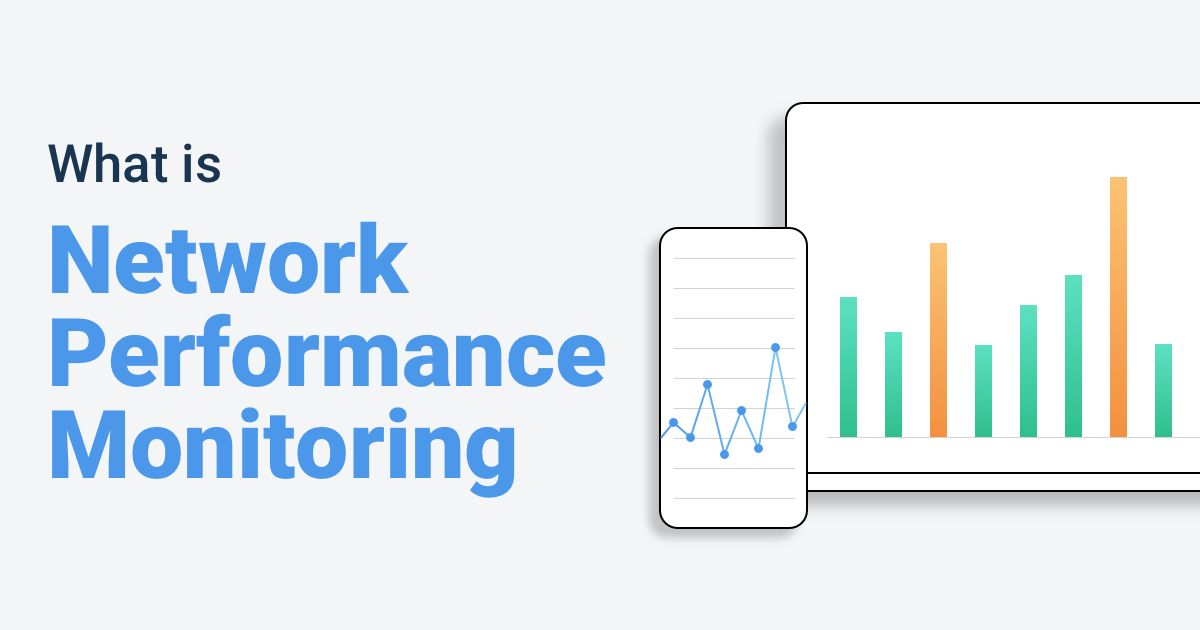Table of Contents
Table of Contents
When it comes to network management, there are two challenges that are ever-present; ensuring optimal network performance and maintaining uninterrupted network connectivity. Network admins are the unsung heroes, diligently managing the digital highways that connect the modern world. To maintain the delicate balance between seamless user experience and network reliability, two crucial practices come to the forefront: Network Load Testing and Load Balancing.
As a network admin, you're acutely aware that the tiniest bottleneck or a surge in traffic can disrupt operations, tarnish your organization's reputation, and lead to loss of revenue. This is where the art of load testing and load balancing becomes your most potent weapon in your arsenal.
In this comprehensive guide, we're going to explore both Network Load Testing and Load Balancing. Whether you're a seasoned network admin or just starting in the field, we'll break down the concepts, best practices, and real-world strategies to ensure your network not only weathers the storm but thrives under the heaviest of workloads.
It's time to become a Load Testing and Load Balancing virtuoso!
Before we dive into the nitty-gritty details, let's set the stage. This blog post is your backstage pass to the world of Network Load Testing and Load Balancing. We're going to unravel the intricacies of these essential concepts, explaining why they're like the Batman and Robin of network administration – always ready to swoop in and save the day.
This practice involves subjecting your network to simulated traffic loads to assess its performance and resilience. It helps you answer critical questions such as: How well does your network handle peak traffic? Will it remain responsive under heavy use?
Load testing allows you to identify bottlenecks and weaknesses in your network infrastructure before they impact users. By conducting load tests, you proactively ensure that your network can meet the demands placed on it, whether you're dealing with a sudden surge in user activity or preparing for future growth.
Network load balancing is the strategy of distributing network traffic across multiple servers or resources to optimize performance, improve redundancy, and ensure high availability. It's a crucial technique to prevent overloading a single server or network component, thereby maintaining consistent performance and minimizing downtime.
As a network administrator, load balancing empowers you to create a resilient network architecture that can handle heavy workloads and adapt to changing conditions, all while providing a seamless user experience.

These two practices, when implemented effectively, not only enhance network performance but also contribute to the overall success and reliability of the organization. In this comprehensive guide, we will explore these concepts in detail, providing you with the knowledge and tools necessary to excel in the art of Network Load Testing and Load Balancing.
Whether you're managing a small network or a large enterprise infrastructure, this guide will empower you to meet the challenges of the digital age with confidence and expertise.
When it comes to managing a network, knowledge is power. In this chapter, we'll unravel the intricacies of Network Load Testing, exploring what it is, why it's crucial, and how it empowers you as a network administrator.
Network Load Testing is like a stress test for your network. It's a systematic approach to assessing your network's performance and resilience under simulated conditions that mimic real-world scenarios. Think of it as a virtual "pressure test" for your infrastructure.
During a load test, your network is subjected to various traffic loads, often simulating the demands it might face during peak usage or unexpected spikes. This process helps you answer important questions such as:
- How well does your network handle peak traffic? Load testing reveals whether your network can maintain optimal performance even when the user activity surges.
- Will it remain responsive under heavy use? Load tests show if your network can handle the load without becoming sluggish or unresponsive.
- Can your network scale as needed? Load testing allows you to understand your network's limitations and how it can adapt to changing demands.
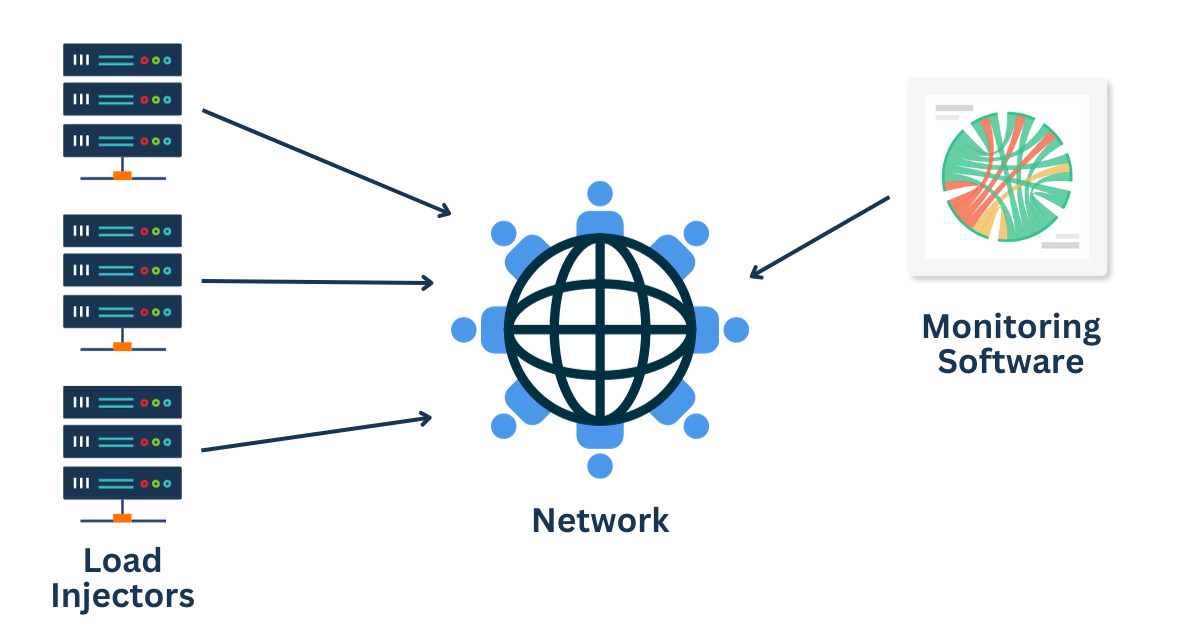
Now, you might wonder why Network Load Testing is such a critical component of network management. The answer lies in the very nature of network administration. As a network administrator, you're responsible for keeping the digital highways open and traffic flowing smoothly.
Here's why network load testing is critical to network monitoring and network optimization as a whole:
Proactively Identify Issues: Load tests allow you to spot vulnerabilities before they become real problems. By pinpointing bottlenecks or potential points of failure, you can address them in advance, preventing user complaints and costly downtime.
Optimize User Experience: The heart of load testing is ensuring that your network provides a seamless and responsive experience for users, regardless of the demands. This not only enhances user satisfaction but also safeguards your organization's reputation.
Scale Your Network: In an ever-changing digital landscape, your network needs to adapt and grow with your organization. Load testing helps you plan for the future, ensuring your network can scale to accommodate increased demands without compromising performance.
In essence, Network Load Testing is your crystal ball, offering a glimpse into your network's future performance. It's your opportunity to fine-tune and optimize network performance, ensuring it's always ready to handle whatever challenges come its way.
In the following sections, we'll explore the different types of load testing, the tools and software at your disposal, and best practices to conduct effective load tests. So, gear up, because the world of load testing is about to unfold before you.
Boost your network's performance, identify bottlenecks, and supercharge your reliability with Obkio's Network Performance Monitoring tool. Obkio is your trusted partner in conquering network challenges and optimizing your digital experiences.

Obkio is a leader in Network Performance Monitoring, offering a dynamic and user-friendly solution for network administrators, just like you. With Obkio, you're not just running tests; you're gaining actionable insights to enhance your network's performance.
- Real-time Monitoring: Obkio provides real-time insights into your network's performance, allowing you to act proactively. No more waiting for issues to spiral out of control; Obkio keeps you in the know.
- Global Reach: With Obkio, you can test your network from multiple locations worldwide. Ensure a consistent user experience everywhere your network reaches, all from one central hub.
- Easy Setup: You don't need to be a tech genius to make the most of Obkio. Our intuitive interface and straightforward setup process make network monitoring a breeze, even if you're new to the game.
Ready to take the plunge and conquer network stress like a pro? It's time to Obkio-fy your network!

At its core, network load testing works by simulating real traffic on a network and observing how the network behaves under that pressure. Here’s what happens during the process:

It creates traffic: Load testing tools generate synthetic data traffic—things like file transfers, video streams, VoIP calls, or general internet usage. This traffic is designed to mimic real-world activity, at varying levels of intensity.
It sends that traffic across the network: The synthetic traffic is sent from one point in the network to another, just like a real user accessing a service. This can happen between different sites, through VPNs, or across WAN or LAN connections.
It pushes the network to its limits: As the volume of traffic increases, the test starts to stress the network. This helps reveal how the network performs under normal conditions, during peak load, and even beyond its expected capacity.
It monitors key performance metrics: While the test runs, the system measures things like latency (how long it takes data to travel), jitter (how consistent that timing is), packet loss (whether any data is dropped), and throughput (how much data gets through). These indicators show how well the network is coping.
It identifies weak points: If the network starts to slow down, drop packets, or produce inconsistent results, the test highlights where those issues are happening. This might be a congested link, an overloaded router, or a misconfigured segment.
In short, network load testing acts like a stress test for your network. It generates traffic, monitors how the network responds, and helps pinpoint exactly where performance breaks down—so you can fix problems before they affect real users.
Network Load Testing encompasses several types, each designed to assess specific aspects of your network's performance and resilience. Understanding these types is crucial for tailoring your load testing approach to meet your specific needs.
In this section, we'll explore the diverse landscape of Network Load Testing types, each designed to shed light on different facets of your network's resilience and performance. Think of it as a toolbox filled with different tools, each serving a unique purpose in ensuring your network's readiness to face varying demands.
The choice of which type of load testing to use depends on your specific goals and the nature of your network or application. By selecting the appropriate type of load test, you can gain valuable insights into your network's performance and make informed decisions to enhance its reliability and user experience.

Here are the most common types of Network Load Testing:
Network Stress testing is like the boot camp of Network Load Testing. Its primary goal is to push your network to its limits and observe how it responds under extreme conditions. By simulating excessive traffic or intense workloads, stress testing helps you identify the breaking point at which your network might fail, become unreliable, or experience performance degradation.
Stress testing is useful for understanding the breaking points of your network and preparing for worst-case scenarios.
The first step in stress testing is to define a stress scenario. This involves determining the specific conditions that your network will face during the test. For instance, you might simulate a sudden surge in user activity, a massive influx of data, or other extreme scenarios that could occur in your network's environment.
During the test, you use specialized load-testing tools or software to generate high loads on your network. These tools simulate excessive traffic or workloads, and they can often be configured to mimic real-world usage patterns.
While the stress test is running, you closely monitor the network's performance. This includes tracking key metrics such as response times, latency, packet loss, throughput, jitter, and the utilization of various network resources like CPU usage, memory, and bandwidth.
Performing a stress test involves several key steps:
- Define Objectives: Start by clearly defining the objectives of the stress test. Determine what aspects of the network you want to evaluate and set specific goals, such as identifying the maximum load the network can handle before failing.
- Choose Testing Tools: Select appropriate load testing tools or software. These tools should allow you to configure the test scenarios, generate high loads, and collect performance data.
- Test Scenario Design: Create a realistic and representative test scenario that reflects the stress conditions you want to evaluate. Consider factors such as the volume of traffic, the rate at which it's generated, and the mix of network activities.
- Prepare the Environment: Ensure that the testing environment is set up to replicate the actual network conditions as closely as possible. This may involve configuring hardware and network settings.
- Execute the Test: Start the stress test, monitoring it in real-time to capture performance data and observe how the network behaves under stress.
- Analyze Results: After the test, analyze the collected data to determine the network's performance under stress. Look for patterns of failure, bottlenecks, and vulnerabilities.
- Optimize and Plan: Use the insights gained from the stress test to optimize your network infrastructure, address weaknesses, and create contingency plans for dealing with extreme scenarios in the future.
Stress testing is an essential part of network management, as it helps you identify and address vulnerabilities before they can disrupt your network and impact users. By understanding how your network behaves under extreme conditions, you can better prepare for unexpected challenges and maintain a robust and reliable network.
Network Capacity Testing is all about evaluating your network capacity, aka your network’s ability to handle expected traffic loads without degradation in performance. It focuses on determining whether your network can maintain optimal performance during peak usage without running into capacity-related issues.
Network Capacity Testing is vital for capacity planning and ensuring your network can scale to meet growing demands.
To begin, you need to define the capacity test scenario. This involves specifying the conditions that you expect your network to handle during peak usage. Consider factors such as the volume of traffic, data transfer rates, and the type of network activities you want to simulate.
Unlike stress testing, which pushes the network to its limits, capacity testing aims to mimic typical usage scenarios. You generate network loads that closely resemble the patterns your network encounters during regular, high-traffic periods.
Using appropriate load testing tools or software, consistently generate network loads that match the defined test scenario. These loads should reflect the peak usage conditions that you want to assess.
While the capacity test is in progress, continuously monitor the network's performance. Track important metrics such as response times, latency, data throughput, and the utilization of network resources like CPU, memory, and bandwidth.
Once the capacity test is complete, analyze the collected performance data. The focus here is on ensuring that the network maintains optimal performance throughout the test, without signs of degradation or issues under the expected load.
Performing a Network Capacity Test involves several key steps:
- Set Objectives: Start by defining the objectives of the capacity test. Specify what aspects of the network's performance you want to evaluate and establish clear goals for the test, such as ensuring that the network can handle peak usage without performance degradation.
- Select Testing Tools: Choose the appropriate load testing tools or software designed for capacity testing. These tools should allow you to configure scenarios that reflect your network's expected usage patterns.
- Scenario Design: Create a capacity test scenario that replicates the conditions your network will encounter during peak usage. This may involve setting specific load levels, user activity patterns, and data transfer rates.
- Environment Preparation: Make sure the testing environment closely matches your network's actual operating conditions. This may involve configuring hardware, network settings, and traffic generation tools.
- Run the Test: Initiate the capacity test, monitoring it in real-time to capture performance data as the network handles the expected load.
- Performance Analysis: After the test, thoroughly analyze the performance data to confirm that the network successfully handled the expected load without performance degradation.
- Optimization and Planning: Use the insights gained from the capacity test to optimize your network infrastructure, ensure it's prepared for peak usage, and establish contingency plans for maintaining performance under high traffic conditions.
Network Capacity Testing is an essential practice to guarantee that your network can consistently meet the performance requirements of your users, even during periods of high demand. By conducting capacity tests, you can proactively address capacity-related issues and maintain optimal network performance.
Discover the power of Network Capacity Monitoring and network Capacity Planning. Understand how and why to monitor and optimize network capacity.
Learn more

Network Performance Testing assesses how well your network performs under typical, real-world conditions. Unlike stress testing or capacity testing, which focus on extreme scenarios, performance testing aims to ensure a consistently smooth user experience during regular usage.
Network Performance Testing measures response times, throughput, and other key network performance metrics and is essential for optimizing day-to-day network performance and ensuring a smooth user experience.
The first step is to define test scenarios that closely replicate the everyday usage patterns of your network. Consider the types of activities your network typically handles, such as data transfers, web browsing, video streaming, and file downloads.
Use load testing tools or software to generate network loads that match the defined test scenarios. The goal is to create loads that mimic the volume and variety of network traffic typically experienced by your users.
Throughout the performance test, continuously monitor the network's performance in real-time. Track essential metrics, including response times, latency, data throughput, packet loss, and the utilization of network resources.
Unlike stress testing, which pushes the network to its limits, performance testing maintains steady, consistent loads that are representative of regular network usage patterns.
Conducting a Network Performance Test involves the following key steps:
- Set Clear Objectives: Begin by defining the specific objectives of the performance test. Establish what aspects of the network's performance you want to evaluate, such as response times, data transfer rates, or the quality of video streaming.
- Choose Testing Tools: Select the appropriate load testing tools or software for performance testing. Ensure that these tools allow you to create test scenarios that mirror real-world network usage patterns.
- Scenario Design: Create performance test scenarios that emulate typical user activities, such as web browsing, video streaming, file transfers, or database queries. Ensure that the test scenarios represent the expected load on the network.
- Prepare the Testing Environment: Set up the testing environment to replicate real network conditions as closely as possible. This may involve configuring hardware, network settings, and other relevant components.
- Initiate the Test: Launch the performance test, monitoring it in real-time to capture performance data as the network handles loads that mimic real-world usage.
- Performance Analysis: After the test, carefully analyze the performance data to assess the network's ability to maintain a smooth and responsive user experience under typical conditions.
- Optimization and Enhancement: Utilize the insights gained from the performance test to optimize your network infrastructure and ensure that it consistently delivers high-quality user experiences.
Network Performance Testing is essential for ensuring that your network consistently meets the expectations of users and operates at peak efficiency during everyday use. By performing performance tests, you can fine-tune your network, address network performance issues, and maintain an optimal user experience.
Discover the importance of network performance testing and how it can optimize your network. Learn more about the top tools and try Obkio for peak performance!
Learn more

Network Load Testing is the practice of subjecting your network to simulated traffic loads (synthetic traffic) to assess its performance and resilience under conditions that mimic real-world scenarios. The primary objective is to ensure that your network can handle expected and unexpected loads without performance degradation or failures.
It's about ensuring that your network can handle the expected load without performance degradation. Network Load Testing is useful for identifying performance bottlenecks under typical conditions and preventing issues during peak times.
To begin, you must define the test scenarios that you want to simulate. These scenarios should closely resemble the types of activities and loads that your network is expected to handle. Consider the volume of traffic, the rate at which it's generated, and the mix of network activities.
Network load testing involves using specialized load testing tools or software to generate traffic loads on your network. These tools create loads that mimic real-world usage patterns and can often be customized to replicate specific conditions.
Throughout the load test, you continuously monitor the network's performance in real-time. This includes tracking critical metrics such as response times, latency, data throughput, packet loss, and the utilization of network resources like CPU, memory, and bandwidth.
After the load test is complete, you analyze the data collected during the test. This analysis allows you to determine how well the network performed under the simulated loads and identify any performance bottlenecks or issues.
Performing a Network Load Test involves several key steps:
- Set Clear Objectives: Start by defining the specific objectives of the load test. Determine what aspects of the network's performance you want to evaluate, such as response times, data transfer rates, or the network's ability to handle concurrent connections.
- Choose Testing Tools: Select appropriate load testing tools or software that are well-suited for network load testing. Ensure that these tools allow you to configure scenarios that replicate real-world network usage patterns.
- Scenario Design: Create load test scenarios that closely resemble typical user activities and network loads. Consider factors such as the volume of traffic, the rate at which it's generated, and the mix of activities to be simulated.
- Prepare the Testing Environment: Set up the testing environment to closely mirror the actual network conditions. This may involve configuring hardware, network settings, and other relevant components to match the network's real-world operating conditions.
- Initiate the Test: Launch the network load test, continuously monitoring it in real-time to capture performance data as the network handles loads that simulate real-world conditions.
- Data Analysis: After the test, thoroughly analyze the performance data to assess how well the network handled the simulated loads, identify bottlenecks, and uncover any issues that emerged during the test.
- Optimization and Enhancement: Utilize the insights gained from the load test to optimize your network infrastructure, address network bottlenecks, and ensure that it can effectively handle the expected and unexpected loads.
Network Load Testing is a crucial practice for network administrators, as it enables them to assess how their networks will perform under a variety of conditions and user loads. By conducting load tests, you can proactively address performance-related issues and maintain a network that consistently delivers a high-quality user experience.
Network Soak Testing is a type of load testing that focuses on assessing the network's stability and performance over an extended period under a continuous load. Unlike other load testing types, which often evaluate how the network performs under peak or extreme conditions, soak testing aims to identify issues related to sustained usage, such as memory leaks, resource exhaustion, or performance degradation over time.
The first step is to define a soak test scenario. This scenario involves specifying the load level you want to apply to the network and the duration of the test. Unlike traditional load tests, soak tests are extended over hours or even days to observe the network's behaviour under prolonged use.
Load testing tools or software are used to generate a continuous, steady load on the network for the defined duration. The load generated in soak testing may simulate typical usage patterns or specific tasks that the network regularly handles.
Throughout the soak test, the network's performance and health are continuously monitored. Key metrics, such as response times, latency, resource usage (e.g., CPU and memory), and network bandwidth utilization, are closely tracked.
After the soak test is complete, the collected data is analyzed to assess the long-term network performance and network stability. The focus is on identifying any memory leaks, gradual resource depletion, or performance degradation that may have occurred during the extended test.
Conducting a Network Soak Test involves several key steps:
- Establish Test Objectives: Clearly define the objectives of the soak test. Specify what aspects of the network's performance and stability you want to evaluate over an extended duration.
- Select Appropriate Testing Tools: Choose load testing tools or software capable of running extended soak tests. Ensure that the tools allow you to configure the test duration and generate continuous loads.
- Design the Soak Scenario: Create a soak test scenario that emulates long-term network usage. This may involve selecting typical network activities and determining the duration of the test.
- Prepare the Environment: Set up the testing environment to match the actual network conditions as closely as possible. Ensure that hardware, network settings, and other components are configured to mirror the network's real-world operation.
- Initiate and Monitor the Test: Start the soak test and continuously monitor the network's performance and resource utilization over the defined duration.
- Data Analysis: After the test's completion, analyze the collected data to identify any issues related to long-term network usage, such as memory leaks, resource exhaustion, or gradual performance degradation.
- Optimization and Improvement: Utilize the insights gained from the soak test to address any identified issues, optimize the network infrastructure, and enhance its long-term stability and performance.
Network Soak Testing is valuable for assessing how the network performs and maintains stability during prolonged usage, helping you uncover issues that may not be apparent during shorter load tests. By conducting soak tests, you can ensure that your network remains reliable and stable over extended periods of operation.
Network Spike Testing is a type of load testing that focuses on assessing how the network copes with sudden, extreme spikes in traffic or load. The primary goal is to evaluate how quickly the network can adapt to increased load, maintain optimal performance, and recover from the spike without performance degradation or downtime.
Spike testing introduces sudden, extreme spikes in traffic to evaluate how your network copes with unexpected surges. It is valuable for identifying how your network handles sudden traffic spikes, which can occur during events like product launches or flash sales.
Start by defining a spike test scenario. This scenario involves specifying the type of spike you want to simulate, its magnitude, and the duration of the spike. The spike can represent sudden bursts in user activity (packer bursts), increased data transfer rates, or other extreme, short-term traffic surges.
Use load testing tools or software to generate a sudden and intense spike in network traffic. The spike is designed to simulate a sharp increase in user activity or resource demand within a short timeframe.
Throughout the spike test, continuously monitor the network's performance in real-time. This includes tracking critical metrics like response times, latency, data throughput, packet loss, and resource utilization.
After the spike is generated and subsides, continue monitoring the network to observe its recovery and how quickly it returns to normal performance levels.
Conducting a Network Spike Test involves several key steps:
- Set Test Objectives: Begin by defining the specific objectives of the spike test. Specify the type of spike you want to simulate, its magnitude, and the expected recovery time. Identify what aspects of the network's performance you want to evaluate.
- Select Appropriate Testing Tools: Choose load testing tools or software that can simulate sudden and intense traffic spikes. Ensure the tools allow you to configure the spike's characteristics, such as its duration and magnitude.
- Design the Spike Scenario: Create a spike test scenario that emulates the sudden, extreme increase in network traffic or resource demand that you want to assess. Specify the spike's parameters and expected duration.
- Prepare the Testing Environment: Set up the testing environment to closely match the actual network conditions. This may involve configuring hardware, network settings, and other components to reflect real-world network operation.
- Initiate and Monitor the Test: Launch the spike test and continuously monitor the network's performance in real-time, paying particular attention to how it copes with the sudden spike in load.
- Recovery Analysis: After the spike test is complete, analyze the collected data to evaluate how quickly the network recovered from the spike and whether it returned to normal performance levels.
- Optimization and Preparedness: Utilize the insights gained from the spike test to optimize your network infrastructure and prepare for sudden traffic spikes, ensuring that your network maintains performance even during unexpected surges.
Network Spike Testing is essential for assessing how your network handles sudden, extreme traffic spikes, which can occur during events like product launches, flash sales, or unexpected surges in user activity. By conducting spike tests, you can ensure that your network adapts quickly, maintains optimal performance, and recovers effectively from unexpected load surges.
Network Volume Testing is a type of load testing that focuses on evaluating a network's ability to manage a large volume of data or transactions. It helps determine whether your network can manage and process data at scale without slowing down.
Network Volume Testing is particularly relevant for applications or services that handle massive data sets, such as databases, storage systems, or data-intensive applications.
Start by defining the volume test scenario. Specify the volume of data or transactions you want to simulate and the rate at which they are generated. This should reflect the anticipated data load in a real-world context.
Utilize load testing tools or software to generate a high volume of data or transactions on the network. The test aims to simulate scenarios in which the network processes a substantial amount of data within a specific timeframe.
Throughout the volume test, continuously monitor the network's performance in real-time. This includes tracking critical metrics such as data transfer rates, response times, data integrity, and resource utilization.
After the volume test is complete, analyze the collected data to assess the network's ability to effectively manage and process large volumes of data or transactions without performance degradation or data corruption.
Conducting a Network Volume Test involves several key steps:
- Set Test Objectives: Begin by defining the specific objectives of the volume test. Specify the volume of data or transactions you want to simulate and the expected data processing rate. Identify what aspects of the network's performance you want to evaluate.
- Select Appropriate Testing Tools: Choose load testing tools or software that are suitable for simulating high volumes of data or transactions. Ensure that the tools allow you to configure the test scenario and data generation rate.
- Design the Volume Scenario: Create a volume test scenario that emulates the processing of large data sets or a high number of transactions within a specified timeframe. Define the data volume and the expected rate at which data is generated.
- Prepare the Testing Environment: Set up the testing environment to closely match the actual network conditions. Ensure that hardware, network settings, and other components are configured to reflect the network's real-world operation.
- Initiate and Monitor the Test: Launch the volume test and continuously monitor the network's performance in real-time. Pay close attention to how the network handles the high volume of data or transactions.
- Data Analysis: After the test is complete, analyze the collected data to evaluate how well the network managed the high data volume and processing rate, checking for performance degradation and data integrity issues.
- Optimization and Scaling: Use the insights gained from the volume test to optimize your network infrastructure and ensure that it can effectively handle large volumes of data or transactions without compromising performance or data integrity.
Network Volume Testing is crucial for applications or services that deal with substantial data processing requirements. By conducting volume tests, you can ensure that your network can effectively manage and process large data sets, maintaining optimal performance and data integrity even under high-volume conditions.
Network Concurrency Testing focuses on assessing how well a network handles multiple simultaneous connections or user interactions. This type of testing is particularly valuable for applications or services where many users need to interact with the network concurrently, such as online gaming platforms, collaborative tools, or e-commerce websites during peak shopping periods.
Begin by defining the concurrency test scenario. Specify the number of simultaneous connections or users you want to simulate and the types of interactions they'll engage in. This should mirror real-world usage patterns.
Use load testing tools or software to simulate the specified number of concurrent connections or users. The test aims to evaluate how the network handles simultaneous interactions without degrading performance.
Throughout the concurrency test, continuously monitor the network's performance in real-time. This includes tracking critical metrics such as response times, latency, user experience, resource utilization, and the ability to handle concurrent interactions.
After the concurrency test is complete, analyze the collected data to assess the network's ability to manage multiple simultaneous connections or user interactions without performance degradation or disruptions.
Conducting a Network Concurrency Test involves several key steps:
- Set Test Objectives: Start by defining the specific objectives of the concurrency test. Specify the number of concurrent connections or users you want to simulate and the expected types of interactions. Identify what aspects of the network's performance you want to evaluate.
- Select Appropriate Testing Tools: Choose load testing tools or software suitable for simulating concurrent connections or user interactions. Ensure that the tools allow you to configure the test scenario and the number of concurrent users.
- Design the Concurrency Scenario: Create a concurrency test scenario that emulates the expected number of concurrent connections or users engaging in typical network interactions. Define the interaction types and concurrency levels.
- Prepare the Testing Environment: Set up the testing environment to closely match the actual network conditions. Ensure that hardware, network settings, and other components are configured to reflect the network's real-world operation.
- Initiate and Monitor the Test: Launch the concurrency test and continuously monitor the network's performance in real-time, paying close attention to how the network handles the concurrent connections and interactions.
- Data Analysis: After the test is complete, analyze the collected data to evaluate how well the network managed the specified number of concurrent connections or user interactions, checking for performance degradation or disruptions.
- Optimization and Scalability: Use the insights gained from the concurrency test to optimize your network infrastructure and ensure that it can effectively handle multiple simultaneous connections or user interactions without compromising performance or user experience.
Network Concurrency Testing is vital for applications or services that rely on concurrent user interactions. By conducting concurrency tests, you can ensure that your network can handle the expected number of simultaneous users without performance degradation or disruptions, maintaining a smooth and responsive user experience.
To conduct effective load testing, you need the right tools and software that offer the features and capabilities necessary for your specific testing objectives.
Load testing tools and software play a critical role in conducting network load testing. They help network administrators simulate various network conditions and assess performance under different loads.
In this exploration on the types of Network Load Testing tools and helping you decide which software is best for your business, here are some key points to consider:
- Types of Load Testing Tools: Load testing tools come in various forms, including open-source and commercial options. These tools can range from comprehensive load testing suites to specialized tools that focus on specific aspects of load testing, such as performance, scalability, or security.
- Features and Capabilities: The features and capabilities of load testing tools can vary widely. Some tools offer real-time monitoring, automatic test scenario generation, support for different protocols, and reporting and analysis features. Others may be more lightweight and suitable for specific use cases.
- Integration and Compatibility: It's essential to choose a load testing tool that integrates well with your existing network infrastructure and is compatible with the systems and technologies you use. Compatibility ensures that your tests accurately reflect real-world conditions.
- Scalability: Consider the scalability of the load testing tool. Can it handle the volume of traffic and the number of virtual users required for your specific network load testing scenarios?
Network load testing tools can be categorized into various types based on their functionality and use cases:
Performance Load Testing Tools: These tools focus on assessing the network's performance under various loads. They measure key performance metrics such as response times, latency, and throughput.
Stress Testing Tools: Stress testing tools are designed to push the network to its limits to identify vulnerabilities, bottlenecks, and failure points. They help you understand how the network behaves under extreme conditions.
Volume Testing Tools: Volume testing tools evaluate the network's ability to manage large volumes of data or transactions. They are essential for applications or services that deal with substantial data processing requirements.
Concurrency Testing Tools: Concurrency testing tools assess how well the network handles multiple simultaneous connections or user interactions, making them ideal for applications that require concurrent user engagement.
Spike Testing Tools: Spike testing tools focus on evaluating the network's ability to adapt to sudden and extreme spikes in traffic or load. These are useful for scenarios where unexpected surges in user activity can occur.
Soak Testing Tools: Soak testing tools help you assess the network's stability and performance over an extended period under continuous load. They are valuable for identifying issues related to sustained usage.
In the realm of network administration, synthetic network monitoring tools have long been trusted companions for keeping a vigilant eye on network performance. These tools are invaluable for real-time diagnostics and ensuring that your network operates smoothly under regular conditions. But what if we told you that these very tools can be repurposed to take on a new, equally vital role: load testing?
Synthetic network monitoring tools, typically used for ongoing network performance monitoring and diagnostics, can also serve as effective load testing tools when configured appropriately.
Obkio stands out as the perfect tool for the job, offering a unique blend of synthetic network monitoring and load testing capabilities. By harnessing the synthetic traffic generation and performance measurement features of Obkio, network administrators can conduct comprehensive load testing that closely mirrors real-world scenarios.
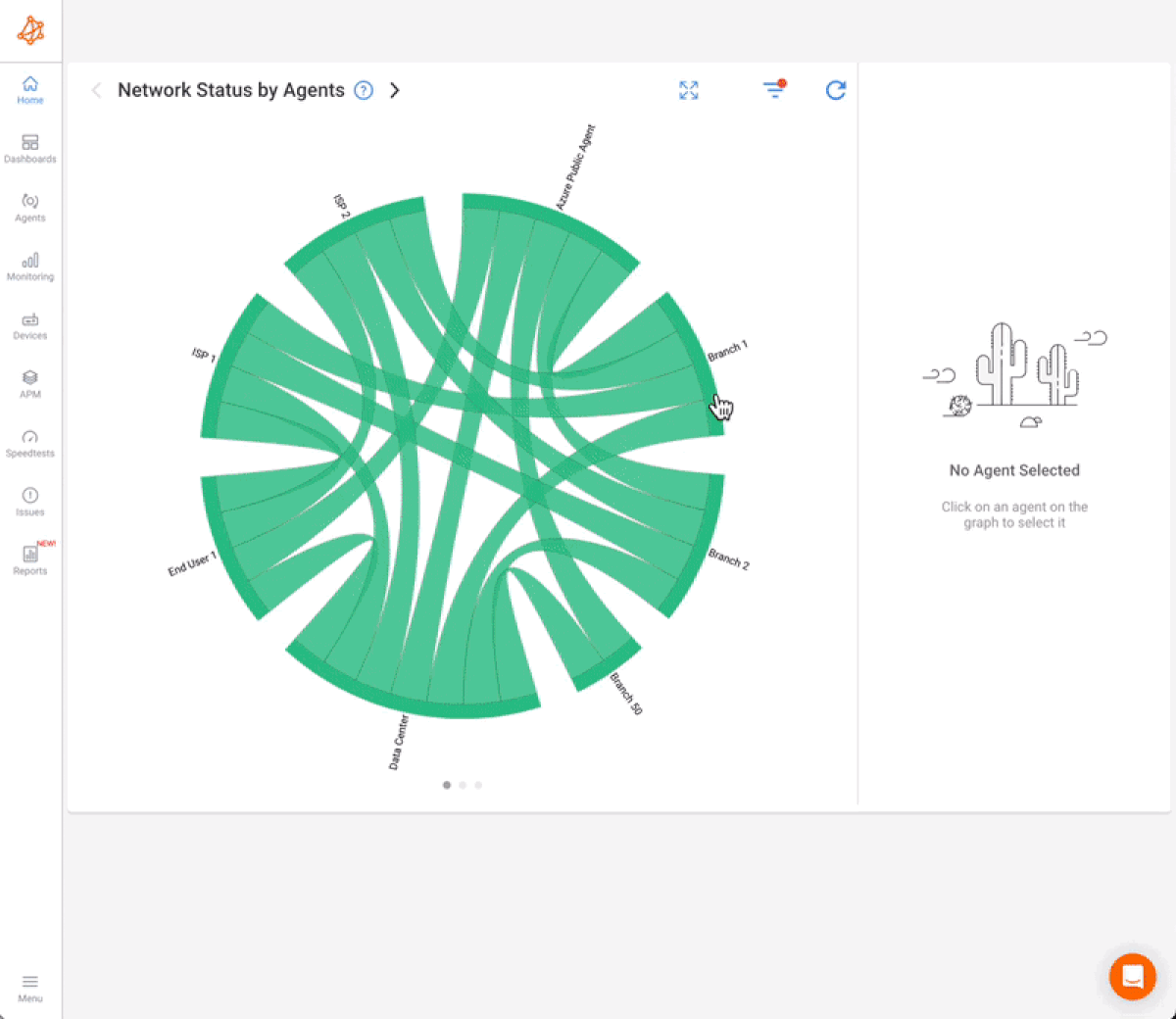
- Realistic Simulations: Obkio allows for the creation of synthetic traffic that accurately simulates real-world network activities, ensuring that load testing closely reflects actual user behavior.
- Continuous Monitoring: Network administrators can leverage Obkio's continuous monitoring capabilities for both ongoing diagnostics and load testing, enabling performance comparisons over time.
- Historical Data: Obkio provides access to historical data on network performance, facilitating comparisons between load testing results and network baseline for more informed decision-making.
- User Experience Insights: Load testing with Obkio captures valuable insights into the user experience by monitoring key performance metrics such as response times, latency, and data throughput.
Let's dive into the world of load testing with a twist, where synthetic monitoring tools, powered by Obkio, become invaluable allies in optimizing network performance and ensuring a seamless user experience.
Generating Synthetic Traffic: Synthetic network monitoring tools can simulate network traffic by generating synthetic data packets or transactions. This synthetic traffic can be customized to mimic various types of network activities, such as web requests, file downloads, or database queries.
Emulating User Behavior: Load testing requires the ability to replicate user behavior, such as clicking links on a website, accessing specific services, or making API requests. Synthetic monitoring tools can be programmed to emulate these user interactions and generate traffic patterns that closely resemble real-world usage.
Measuring Network Performance: Synthetic monitoring tools are designed to capture network performance metrics, such as response times, latency, throughput, and packet loss. During load testing, these tools can record how the network performs under increased loads and provide insights into performance degradation or bottlenecks.
Stress Testing: By gradually increasing the volume of synthetic traffic, these tools can help assess the network's ability to handle stress. They can be configured to generate a higher volume of synthetic requests to evaluate how the network behaves under load and whether it can withstand stress conditions.
Reporting and Analysis: Synthetic monitoring tools typically offer reporting and analysis features. During load testing, they can produce detailed reports on how the network performs under different loads, making it easier to identify performance issues and bottlenecks.

Choosing the right network load testing tool is crucial for accurate and effective load testing. If you’re a network admin looking for the perfect network load testing tool to test your business’ network, here are some things to consider.
1. Define Your Objectives:
Start by defining the objectives of your load testing. Determine what aspects of your network's performance you want to evaluate, which will guide your tool selection.
2. Consider Your Network Environment:
Assess your network's architecture, technologies, and infrastructure. Choose a tool that is compatible with your network environment.
3. Scalability:
Ensure the tool can handle the required volume of traffic and user load for your specific testing scenarios. It should be able to scale to meet your needs.
4. Features and Reporting:
Evaluate the features and reporting capabilities of the tool. Look for real-time monitoring, scenario customization, and in-depth analysis and reporting features.
5. Ease of Use:
Choose a tool that matches the skill level of your testing team. Some tools are more user-friendly, while others may require a higher level of technical expertise.
6. Budget Considerations:
Consider your budget constraints and explore both open-source network monitoring tools and commercial options. Keep in mind that some premium tools offer advanced features and support.
7. Trial and Testing:
Whenever possible, try out the tool through a trial version or limited testing to ensure it meets your requirements before making a full commitment.
Choosing the right network load testing tool is essential for accurate testing and optimizing your network's performance. Careful consideration of your objectives, network environment, and tool features will help you make an informed decision.
Learn how to use synthetic monitoring to monitor network performance & identify network issues, and the benefits of synthetic traffic over packet capture.
Learn more

Network load testing is more than just generating traffic; it's a strategic art that requires meticulous planning and execution. In this section, we delve into the nuanced world of load testing, exploring the key elements that make it an art form in network administration.
From setting up a controlled testing environment to crafting effective load tests, analyzing results, and addressing common challenges, this chapter serves as a comprehensive guide for network administrators seeking to master the intricacies of load testing.
Setting up a network load testing environment is a crucial first step in the load testing process. This involves creating a controlled environment that closely mirrors the conditions of your production network. Here's what you need to consider:
- Test Environment Replication: Ensure that the test environment replicates the configurations, hardware, and software used in the production network. This includes web servers, application servers, databases, and network devices.
- Load Testing Tools: Select the appropriate load testing tools, including synthetic monitoring tools like Obkio, and configure them to generate the desired load and traffic patterns.
- Network Virtualization: Use virtualization technology to simulate the behavior of users, devices, and network traffic. Virtual users should mimic real users' actions to achieve realistic results.
- Scalability: Ensure that the testing environment can scale to generate the required load. This may involve adding more load generator instances or virtual users to match the expected traffic volume.
Effective load tests are the cornerstone of meaningful load testing. To design them, you must consider various factors:
Test Scenarios: Define the specific scenarios you want to test, such as user interactions, transaction flows, or API requests. These scenarios should align with your network's typical usage patterns.
Load Patterns: Determine the load patterns, including the number of concurrent users, the rate of transactions, and traffic volume. Load patterns should represent realistic network conditions.
Ramp-up and Ramp-down: Implement gradual load increases (ramp-up) and decreases (ramp-down) to simulate real-world scenarios where user activity fluctuates.
Test Duration: Set the duration of load tests to evaluate how the network performs over time. Consider scenarios where the load may be sustained for extended periods.
Analyzing network load test results is critical for gaining insights into your network's performance under load. This step involves examining various aspects:
- Performance Metrics: Review key network performance metrics, such as network response times, latency, throughput, error rates, and resource utilization. Compare these metrics under different load conditions to identify performance bottlenecks.
- Threshold Identification: Define performance thresholds that indicate when the network is under stress or experiencing degradation. Identify the load levels at which these thresholds are breached.
- Root Cause Analysis: When issues are detected, conduct root cause analysis to determine the source of network problems. This might involve investigating server limitations, network congestion, or application inefficiencies.
- Report Generation: Generate comprehensive reports that summarize load testing results. These reports provide a clear overview of how the network performed under varying conditions and can be shared with relevant stakeholders.
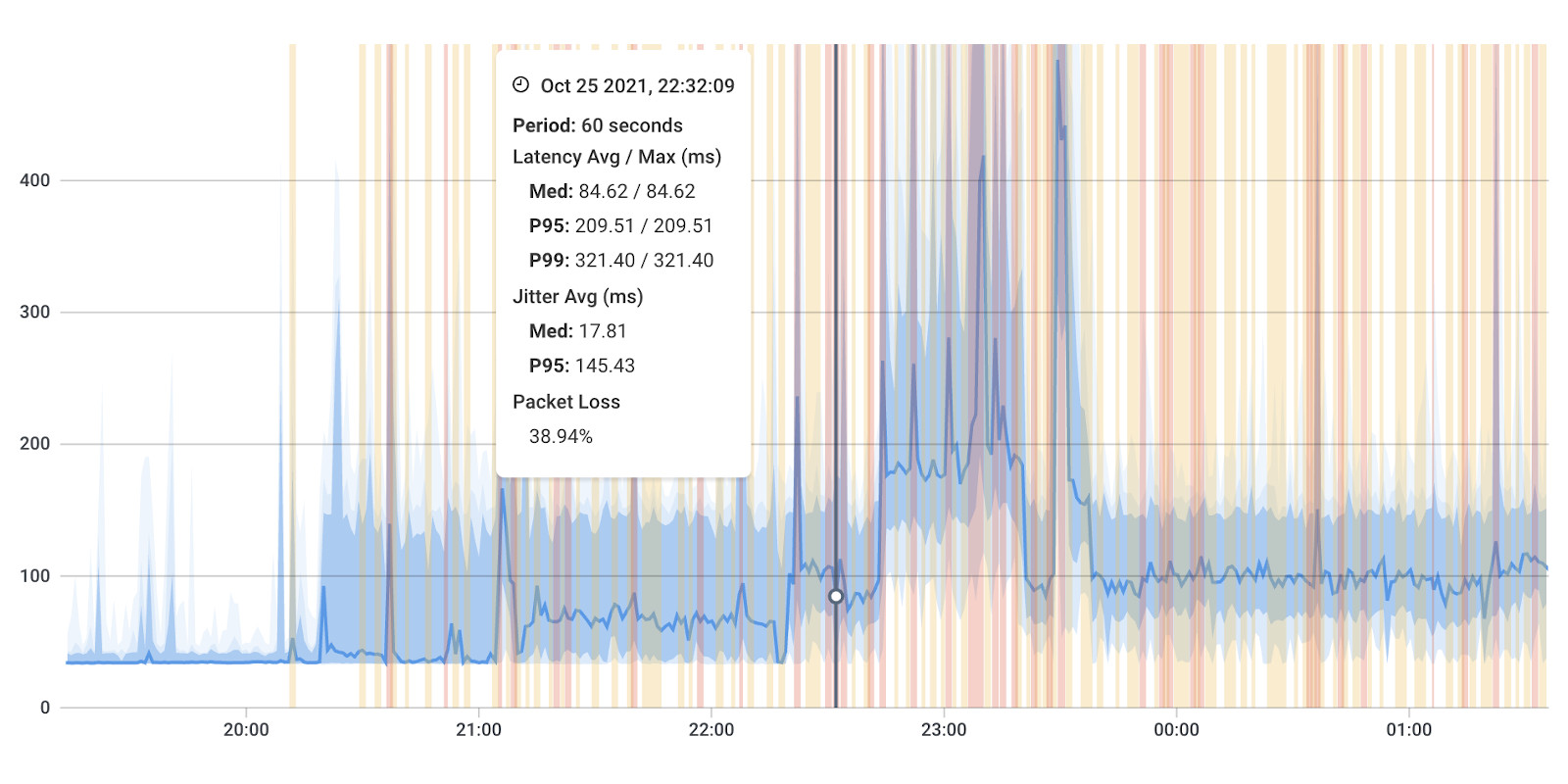
Embarking on the journey of network load testing comes with its own set of challenges, each requiring a strategic approach for effective resolution. In this section, we delve into the common hurdles faced by network administrators during load testing and unveil practical solutions to navigate these challenges.
From scalability concerns to the intricacies of test data management and synchronization issues, we equip you with insights to optimize your network load-testing endeavours.
1. Scalability Challenges:
Challenge: Ensuring that load tests can scale to simulate realistic levels of user activity.
Solution: Use load testing tools that offer scalability features, allowing you to distribute load across multiple load generators or instances. Additionally, consider cloud-based solutions that provide on-demand resources for conducting large-scale tests.
2. Realistic Test Scenarios:
Challenge: Creating load test scenarios that accurately reflect real-world usage patterns.
Solution: Collaborate with stakeholders, including developers, business analysts, and end-users, to gather insights into actual usage scenarios. Use this information to design test scenarios that closely mimic the expected behavior of users on the network.
3. Test Data Management:
Challenge: Managing and maintaining realistic test data for load testing.
Solution: Create representative datasets that reflect the diversity of data expected in a production environment. Anonymize sensitive information if necessary. Additionally, automate the process of data generation and ensure that test data remains consistent across multiple iterations of load testing.
4. Synchronization Issues:
Challenge: Ensuring synchronization between virtual users and load generators to simulate realistic user interactions.
Solution: Use load testing tools that offer synchronization features, allowing virtual users to emulate real users' interactions in a coordinated manner. Properly configure scenarios to replicate realistic user behavior.
5. Network Infrastructure Limitations:
Challenge: Identifying and addressing limitations in the network infrastructure that may impact load testing accuracy.
Solution: Conduct a thorough network assessment to identify potential bottlenecks, such as bandwidth constraints or hardware limitations. Address these limitations to ensure that load testing results accurately reflect the network's performance under realistic conditions. Our Network Assessment Template can help you with that.
Unlock the power of network assessment with our step-by-step network assessment template. Follow this ultimate blueprint for ongoing network excellence.
Learn more

6. Resource Utilization Monitoring:
Challenge: Effectively monitoring resource utilization during load tests.
Solution: Use load testing tools that provide comprehensive monitoring features, allowing you to track key performance metrics such as CPU usage, memory usage, and disk I/O. This data is crucial for identifying resource bottlenecks and optimizing the network infrastructure.
7. Test Maintenance:
Challenge: Keeping load tests up-to-date as the network evolves.
Solution: Regularly review and update load test scenarios to reflect changes in the network architecture, application features, and user behaviour. Automated testing tools can assist in maintaining and re-running tests efficiently.
8. Performance Threshold Identification:
Challenge: Defining performance thresholds that indicate stress or degradation.
Solution: Work closely with stakeholders to establish clear performance criteria. Set threshold values for key performance metrics, such as response times and error rates, to identify when the network is under stress. Regularly review and adjust these thresholds based on evolving network requirements.
9. Test Duration Considerations:
Challenge: Determining the appropriate duration for load tests.
Solution: Consider the expected usage patterns of the network, including peak hours and sustained usage. Design load tests with durations that capture variations in load over time. Ensure that tests run long enough to identify potential issues related to sustained usage.
10. Collaboration and Communication:
Challenge: Ensuring effective collaboration and communication among the testing team and other stakeholders.
Solution: Foster open communication channels between the testing team, developers, network administrators, and business stakeholders. Regularly share load testing results, insights, and collaborate on action plans to address identified issues.
By addressing these common challenges with thoughtful planning, collaboration, and the use of appropriate testing tools, network administrators can conduct effective load testing that provides valuable insights into the performance and scalability of their networks.
Now, you understand the art of network load testing, equipped with practical guidance on setting up an effective load testing environment, designing meaningful load tests, and mastering the art of analyzing results. So, it’s time to get testing!
Load balancing is a crucial strategy employed in network management to distribute incoming network traffic across multiple servers or resources. The primary goal is to ensure that no single server bears an overwhelming load, optimizing resource utilization, enhancing performance, and preventing any one component from becoming a bottleneck.
Here are some key aspects of network load balancing:
Traffic Distribution: Load balancers evenly distribute incoming requests among a pool of servers, preventing any single server from becoming overwhelmed.
Enhanced Reliability: By spreading the load, load balancing increases the overall reliability and availability of services, as if one server fails, others can seamlessly handle the traffic.
Optimized Performance: Load balancing improves the performance of applications by directing traffic away from overloaded servers, reducing response times and preventing performance degradation.
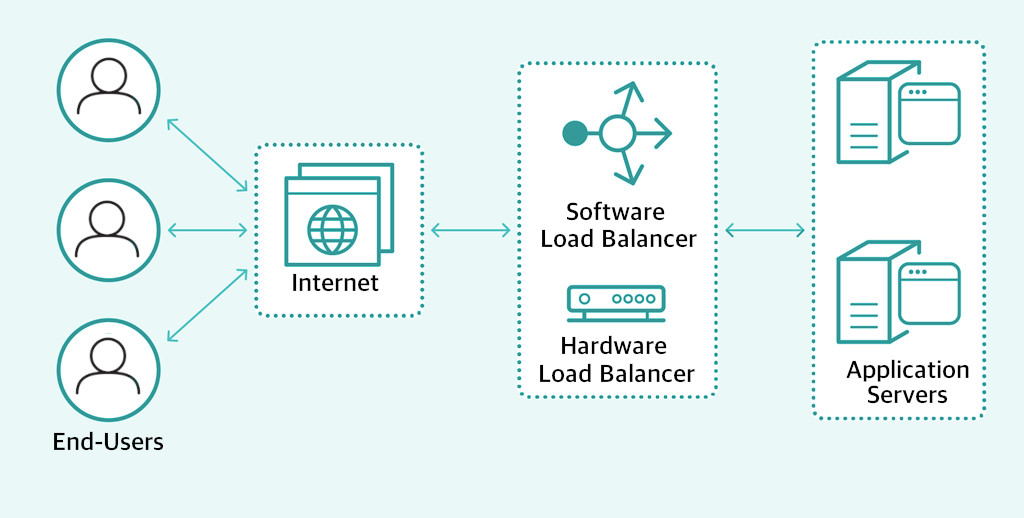
Network Load Balancing distributes incoming network traffic across multiple servers to ensure optimal resource utilization, enhance performance, and improve fault tolerance. NLB operates at the network layer (Layer 4 of the OSI model) and is commonly used for balancing the load on web servers, FTP servers, and other TCP/IP-based services.
But how does it actually work? Let’s look at a step-by-step overview:
Step 1. Formation of a Cluster:
- Two or more servers are grouped together to form a cluster.
- Each server in the cluster is referred to as a "host."
Step 2. Shared IP Address:
- The cluster is assigned a single virtual IP address (VIP) that represents the service being provided by the servers in the cluster.
- Clients connect to this shared IP address rather than individual server IP addresses.
Step 3. Shared Name:
- In addition to the shared IP address, the cluster may have a shared name (DNS name) associated with it, making it transparent to clients.
Step 4. Load Balancing Algorithm:
- Network load balancing uses a load balancing algorithm to determine how incoming traffic is distributed among the servers in the cluster.
- Common algorithms include Round Robin, Least Connections, Weighted Round Robin, Least Response Time, and IP Hash.
Step 5. Packet Filtering:
- Network load balancing examines incoming network packets to determine the appropriate server to handle the request based on the chosen load balancing algorithm.
- Network traffic is filtered and directed to the appropriate server in the cluster.
Step 6. Handling of Connections:
- Network load balancing ensures that new connections are evenly distributed among the servers to maintain a balanced load.
- Existing connections are maintained until they are completed or terminated.
Step 7. Affinity:
- Network load balancing can be configured with or without affinity.
- With affinity (sticky sessions), NLB directs subsequent requests from the same client to the server that handled the initial request. This is useful for maintaining the session state.
Step 8. Monitoring Server Health:
- Network load balancing constantly monitors the health of each server in the cluster.
- If a server becomes unavailable or unresponsive, NLB automatically redirects traffic to the remaining healthy servers.
Step 9. Scalability:
- Network load balancing allows for easy scalability by adding or removing servers from the cluster.
- New servers can be added dynamically without disrupting existing connections.
Step 10. Network Fault Tolerance:
- Network load balancing enhances fault tolerance by providing redundancy. If one server fails, Network load balancing redistributes the traffic to the remaining servers.
- The shared IP address and shared name are still reachable, minimizing downtime.
Step 11. Global Server Load Balancing (GSLB):
- For more complex scenarios involving geographically dispersed clusters, GSLB can be implemented to direct clients to the nearest or most available cluster based on various factors like proximity, server health, and load.
In summary, Network Load Balancing works by creating a cluster of servers, assigning them a shared IP address and name, and using a load-balancing algorithm to distribute incoming traffic. Network load balancing continually monitors server health, ensuring optimal load distribution, fault tolerance, and scalability for improved network performance and reliability.

Network load balancers play a pivotal role in optimizing the distribution of incoming traffic across multiple servers, ensuring efficient resource utilization and enhancing network performance. The choice between hardware and software load balancers depends on various factors, each with its own set of advantages and considerations.
Physical Devices:
- Dedicated Hardware: Hardware load balancers are dedicated physical devices designed specifically for the purpose of load balancing.
- Appliance Form Factor: They often come in the form of appliances, with specialized hardware components optimized for high-performance networking.
Scalability and Performance:
- High Scalability: Hardware load balancers are known for their scalability, making them suitable for large-scale deployments and high-traffic environments.
- Performance: These devices are engineered for high performance, providing efficient load balancing even under heavy traffic loads.
Reliability and Redundancy:
- Built-in Redundancy: Hardware load balancers often come with built-in redundancy features to ensure continuous operation in the event of a hardware failure.
- Reliability: They are designed to offer high reliability and uptime, critical for mission-critical applications.
Maintenance and Management:
- Vendor-Specific Interfaces: Management interfaces are typically provided by the vendor, offering specific tools for configuration and monitoring.
- Ease of Use: Hardware load balancers are generally considered user-friendly, with interfaces tailored to their specific hardware capabilities.
Virtual Appliances:
- Virtualized Instances: Software load balancers operate as virtual appliances, running on general-purpose hardware or within virtualized environments.
- Flexibility: This virtualized nature provides greater flexibility and adaptability to different deployment scenarios.
Scalability and Performance:
- Scalability: While software load balancers are scalable, they may have limitations compared to their hardware counterparts, especially in high-traffic scenarios.
- Performance: Performance can be influenced by the underlying hardware and virtualization environment.
Reliability and Redundancy:
- Dependency on Host Environment: The reliability of a software load balancer may depend on the stability and redundancy of the host environment.
- Redundancy Strategies: Software load balancers may implement redundancy strategies, but they might differ from those of hardware devices.
Maintenance and Management:
- Software Stack Integration: Management interfaces are often integrated into the software stack, with configuration options accessible through standard networking tools.
- Customization: Software load balancers may offer more customization options, but configuration may require a higher level of technical expertise.
The choice between hardware and software load balancers hinges on the specific needs and characteristics of your network. Both options have their merits, and selecting the right one involves careful consideration of factors such as scale, flexibility, performance, and cost.
Need help deciding? Here are some things to consider:
Consider Scale:
For large-scale deployments with high traffic volumes, hardware load balancers are often preferred for their scalability and dedicated performance.
Flexibility Needs:
If flexibility and adaptability are paramount, especially in virtualized or cloud environments, software load balancers offer a more versatile solution.
Performance Requirements:
Evaluate the specific performance requirements of your network. Hardware load balancers excel in raw performance, while software load balancers provide flexibility and may be well-suited for moderate to high traffic.
Cost Considerations:
Consider both upfront costs and ongoing operational expenses. Hardware load balancers may have higher upfront costs but can be more cost-effective for large-scale and long-term deployments.
Unveil the secrets to detecting & reducing network overload. Learn to prevent it & control your network capacity with the power of Obkio's monitoring tool.
Learn more

Network load balancing algorithms are crucial components of load balancers that determine how incoming traffic is distributed across a pool of servers. The choice of a network load balancing algorithm impacts the efficiency, fairness, and overall performance of the network.
Here, let's explore some common load-balancing algorithms:
This is one of the simplest load balancing algorithms, where incoming requests are distributed sequentially in a circular order to the servers in the pool.
Advantages:
- Easy to implement.
- Even distribution of traffic among servers.
It doesn't account for server load or capacity, potentially leading to uneven distribution if servers have different capabilities.
This algorithm directs incoming requests to the server with the fewest active connections at any given moment.
Advantages:
- Balances load based on server load, preventing overload on heavily used servers.
It may not consider the server's processing capacity or the complexity of requests.
Similar to Round Robin, but with Weighted Round Robin, servers are assigned weights based on their capacity or capabilities. Servers with higher weights receive more requests.
Advantages:
- Allows for proportional distribution based on server capacity.
Weights must be carefully assigned to accurately reflect server capabilities.
Requests are directed to the server with the fastest response time, aiming to optimize overall system response.
Advantages:
- Enhances user experience by directing requests to servers with lower response times.
Requires continuous monitoring of server response times.
Uses a hash of the client's IP address to determine which server receives the request. This ensures that requests from the same client are consistently directed to the same server.
Advantages:
- Useful for maintaining session state, as subsequent requests from the same client go to the same server.
May not distribute load evenly if the hash function results in clustering.
This method directs traffic to the server with the least currently used bandwidth.
Advantages:
- Useful when servers have different available bandwidth capacities.
The Least Bandwidth method may not account for processing capacity or server load.
Random Robin distributes requests randomly among the servers, providing a simple form of load distribution.
Advantages:
- Can be useful in certain scenarios where random distribution is acceptable.
This method may not ensure even load distribution over time.
Selecting the appropriate load balancing algorithm is a crucial decision in optimizing network performance. The choice should align with the specific requirements and characteristics of the network to ensure fair distribution of traffic and efficient resource utilization.
But sometimes you just don’t know where to start to find the right algorithm for your network’s needs. To help you out, let’s go over some key points:
- Consider Network Characteristics: The optimal algorithm depends on the characteristics of the network, server capabilities, and the nature of incoming requests.
- Monitor and Adjust: Regularly monitor the performance of servers and the network under different algorithms. Adjust the algorithm based on changing network conditions and requirements.
- Combine Algorithms: In some cases, a combination of algorithms might be used for different types of traffic or under varying conditions.


Scaling your network with load balancing is a strategic approach to handle increased traffic, improve resource utilization, and enhance overall performance. From horizontal scaling and improved resource utilization to the nuances of global server load balancing, we’ll explore strategic approaches that empower network administrators to meet the challenges of increased traffic, enhance redundancy, and optimize overall network performance.
Horizontal scaling involves adding more servers to the network to distribute the load across multiple instances. However, it requires load balancing to evenly distribute traffic among the newly added servers.
- Easily accommodates increased traffic by expanding server capacity.
- Enhances redundancy and fault tolerance as traffic is distributed among multiple servers.
- Load balancers play a crucial role in managing the horizontal scaling process.
Load balancing ensures that incoming traffic is distributed evenly among available servers, preventing any single server from becoming a bottleneck.
- Maximizes the use of server resources by preventing overloading of individual servers.
- Optimizes the overall performance of the network by efficiently distributing traffic.
- Load balancing algorithms play a role in determining how resources are utilized across servers.
Load balancing provides redundancy by distributing traffic across multiple servers. If one server fails, others can seamlessly handle the load.
- Increases network reliability and availability.
- Minimizes downtime in the event of a server failure.
- Load balancing configurations should include health checks to monitor the status of servers and redirect traffic away from failed servers.
GSLB is a technique that involves load balancing across multiple data centers or geographically dispersed server clusters.
- Directs traffic to the nearest or most available server based on factors such as proximity, server health, and load.
- Enhances user experience by reducing latency and optimizing server selection.
- Requires coordination and communication among geographically dispersed server clusters.
Load balancing enables the dynamic scaling of resources based on demand. Additional servers can be added or removed as needed.
- Adapts to fluctuations in traffic and usage patterns.
- Provides cost-efficiency by scaling resources up during peak periods and down during low traffic.
- Cloud-based load balancing solutions often offer on-demand scalability.
The choice of load balancing algorithms plays a crucial role in how traffic is distributed across servers during scaling.
- Different algorithms cater to various network architectures and usage patterns.
- Algorithms such as Round Robin, Least Connections, and Weighted Round Robin can be tailored to specific scaling requirements.
- Select the appropriate algorithm based on the characteristics of the network and the servers being used.
Load balancing can be integrated with auto-scaling systems that automatically adjust the number of servers based on predefined conditions.
- Streamlines the scaling process by automatically adding or removing servers.
- Ensures that the network adapts dynamically to changing demands.
- Requires coordination between network load balancing configurations and auto-scaling policies.
Regular network performance monitoring for monitoring server health, and load distribution is essential for effective scaling. Network administrators rely on advanced monitoring tools, such as Obkio, to gain comprehensive insights into the intricacies of their network.
Integrating network performance monitoring with load balancing strategies creates a holistic approach to network optimization. Obkio's compatibility with network load balancing tools ensures that the entire network ecosystem is considered in scaling decisions.
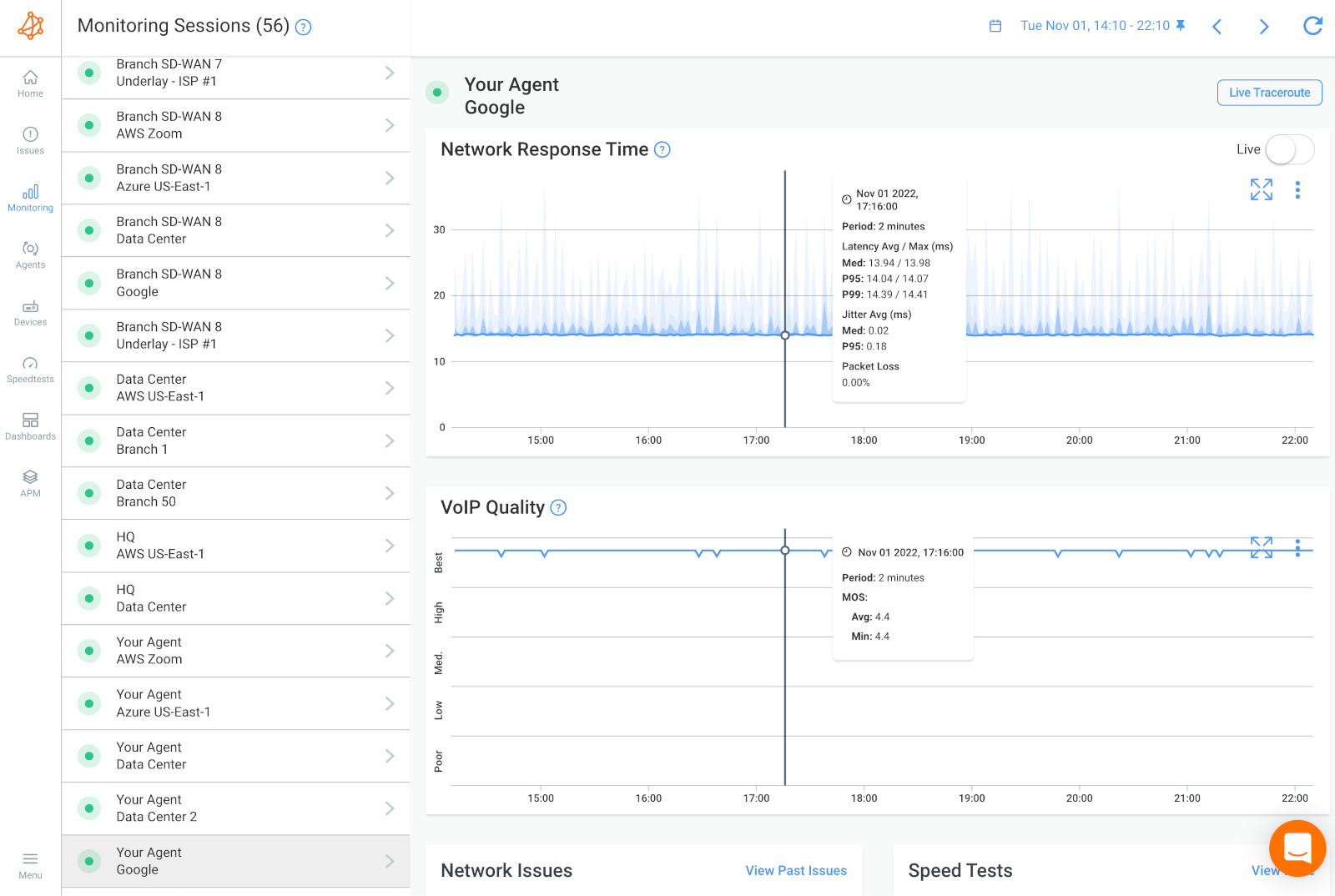
- Real-time Visibility: Tools like Obkio provide real-time visibility into network performance, allowing administrators to identify bottlenecks, latency issues, and potential points of failure.
- End-to-End Monitoring: Obkio offers end-to-end monitoring, encompassing both on-premises and cloud-based infrastructure. This holistic view ensures that administrators have a complete understanding of the entire network ecosystem.
- User Experience Insights: Monitoring tools go beyond technical metrics, providing insights into the actual user experience. By understanding how users interact with the network, administrators can make informed decisions to enhance overall satisfaction.
In the context of scaling strategies, Obkio's synthetic monitoring capabilities become invaluable. It allows administrators to simulate varying levels of network load, helping assess the network's performance under different conditions.
Obkio facilitates continuous monitoring, ensuring that administrators receive real-time data on network performance. This is particularly beneficial during scaling events, where immediate insights into the impact on server health and load distribution are crucial.

Load balancing is a nuanced art that goes beyond distributing traffic—it involves configuring, ensuring redundancy, maintaining security, and fine-tuning to achieve optimal performance. This chapter delves into the mastery of network load balancing techniques, covering key aspects that empower network administrators to wield load balancers effectively.
Configuring load balancers is the foundational step in the load-balancing process. This involves defining how incoming traffic should be distributed among the servers in the pool.
Load Balancing Algorithms: Select the appropriate algorithm (Round Robin, Least Connections, Weighted Round Robin, etc.) based on the network's characteristics and requirements.
Server Health Checks: Implementing health checks to monitor the status of servers, ensuring that traffic is directed to healthy instances.
Uniform Configuration: Ensuring uniformity in load balancer configurations across the network to maintain consistency.
Scalability Planning: Configuring load balancers with scalability in mind, accommodating potential growth in network traffic.
Redundancy is a critical aspect of load balancing to ensure uninterrupted service even in the face of hardware failures or other disruptions.
Failover Mechanisms: Implement network failover mechanisms to redirect traffic to healthy servers in the event of a server or load balancer failure.
Clustering: Configure load balancers in a clustered environment for enhanced redundancy and high availability.
Geographic Redundancy: Explore geographic redundancy for distributed networks to mitigate the impact of regional outages.
Regular Testing: Conduct regular tests to validate the failover mechanisms and ensure seamless transitions during disruptions.
Security is paramount in load balancing to protect against potential threats and vulnerabilities.
SSL Offloading: Implementing SSL offloading at the load balancer to centralize encryption/decryption processes.
Access Controls: Configuring access controls to restrict unauthorized access to the load balancer and the servers in the pool.
Regular Audits: Conducting regular security audits to identify and address potential vulnerabilities.
WAF Integration: Integrating Web Application Firewalls (WAFs) with load balancers for an added layer of protection against web-based attacks.
Continuous monitoring and fine-tuning are essential for adapting load-balancing configurations to evolving network conditions.
Real-Time Monitoring: Utilizing real-time monitoring tools to track key performance metrics such as server load, response times, and error rates.
Capacity Planning: Analyzing monitoring data for capacity planning, anticipating future traffic patterns, and adjusting load balancing configurations accordingly.
Automated Alerts: Implementing automated network monitoring alerts for abnormal conditions, allowing administrators to proactively address issues.
Regular Reviews: Conduct regular reviews of load balancing configurations to ensure they align with the evolving needs of the network.
Master real-time network monitoring with our comprehensive guide. Learn essential tips, tools, and techniques for seamless network management.
Learn more

Building a resilient network involves a combination of strategic planning, proactive measures, and the adoption of best practices. In this final chapter, we’re going to focus on key aspects that contribute to network resilience, ensuring uninterrupted service and preparedness for potential challenges.
The most important point is the synergy between network load testing and network load balancing.
Combining network load testing and network load balancing is essential for optimizing the performance and resilience of a network. Load testing involves simulating real-world scenarios to assess the network's capacity, identify bottlenecks, and reveal areas for improvement. When coupled with load balancing, administrators can fine-tune configurations based on actual usage patterns, ensuring the network performs optimally under realistic conditions.
This synergy allows proactive identification of weak points, stress areas, and enhanced scalability planning. Load testing anticipates failures, and load balancing is optimized for increased traffic, facilitating seamless adaptation to growth.
Network load testing involves simulating real-world scenarios to evaluate how the network performs under varying levels of traffic. It helps identify potential bottlenecks, assesses the network's capacity, and reveals areas for improvement.
Load balancing distributes incoming traffic across multiple servers to prevent overloading individual nodes. Combining load testing with load balancing allows administrators to fine-tune load-balancing configurations based on actual usage patterns, optimizing the network's performance under realistic conditions.
Load Testing: Through load testing, administrators can proactively identify weak points, stress points, and potential failures in the network under heavy loads.
Load Balancing: Load balancing, when informed by load testing results, helps distribute traffic efficiently, reducing the risk of overload on specific servers. This proactive approach ensures that potential weak points identified during load testing are mitigated through well-configured load balancing strategies.
Load Testing: Load testing provides insights into the network's scalability, helping administrators understand how the system responds to increased loads.
Load Balancing: Based on load testing results, administrators can configure load balancers to handle scalable traffic effectively. This ensures that the network can seamlessly adapt to growth without sacrificing performance.
Load Testing: Load testing can simulate scenarios where servers fail or experience downtime, allowing administrators to assess the network's resilience.
Load Balancing: By combining load testing with load balancing, administrators can optimize failover mechanisms. Redundancy configurations can be refined to ensure that, in the event of a server failure, traffic is smoothly redirected to healthy servers, minimizing service disruptions.
Load Testing: Conducting regular load testing cycles helps administrators stay informed about the network's evolving performance characteristics.
Load Balancing: Informed by load testing insights, load balancing configurations can be continuously refined. This iterative process ensures that the network is not only well-prepared for existing challenges but is also adaptable to future changes and growth.
In summary, the combination of network load testing and network load balancing is integral to achieving a robust, high-performing, and resilient network. Load testing provides insights into the network's behaviour under different conditions, while load balancing ensures that the network is well-configured to handle varying traffic loads efficiently and reliably.
This synergy enables administrators to proactively address issues, optimize configurations, and continuously enhance the overall performance of the network.
Learn to use network optimization and monitoring to optimize network performance, improve your end-user experience, and compare performance from the past.
Learn more

Network administration is characterized by constant adaptation to emerging technologies, evolving user demands, and the ever-present challenges of maintaining a high-performing network. As technologies advance and organizational needs shift, the role of network admins remains pivotal in navigating these changes.
Integrating network load testing and network load balancing is a powerful strategy for empowering networks. Load testing provides critical insights into performance under various conditions, while load balancing ensures that the network is equipped to handle diverse traffic loads efficiently. This synergy not only optimizes current performance but also positions the network to scale seamlessly and adapt to future demands.
As you embark on enhancing your network's performance and resilience, there are a variety of tools to streamline the process. Obkio's Network Performance Monitoring (NPM) tool is one of them.

Obkio's NPM tool offers a comprehensive suite of features, including real-time visibility into network performance, end-to-end monitoring capabilities, and synthetic monitoring for load-testing scenarios. Its user-friendly interface and robust functionality empower administrators to make data-driven decisions, proactively address issues, and optimize network configurations.
Seamlessly integrating Obkio's NPM tool into your network management practices enhances your ability to monitor, analyze, and optimize with precision. Whether conducting load tests, fine-tuning load balancing configurations, or ensuring the overall health of your network, Obkio provides the real-time data and insights needed for informed decision-making.

In conclusion, as you navigate the ongoing journey of network administration, integrating load testing and load balancing becomes a strategic imperative. By pairing these practices with the advanced capabilities of Obkio's NPM tool, you not only empower your network for current demands but also fortify it for the challenges of tomorrow.












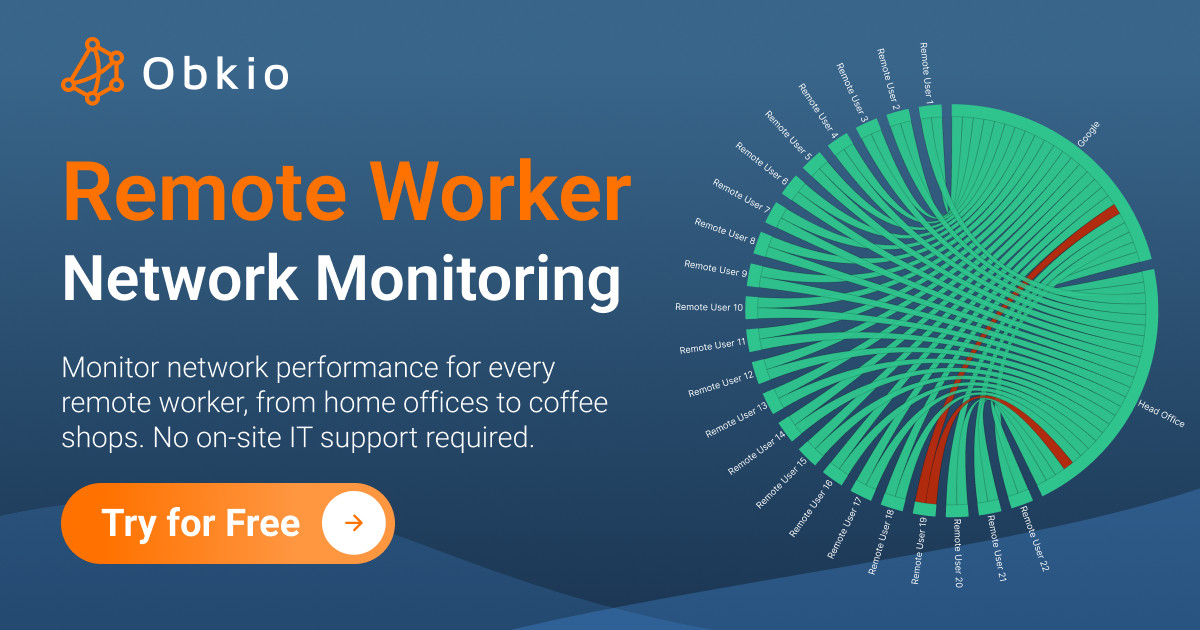













 Obkio Blog
Obkio Blog








